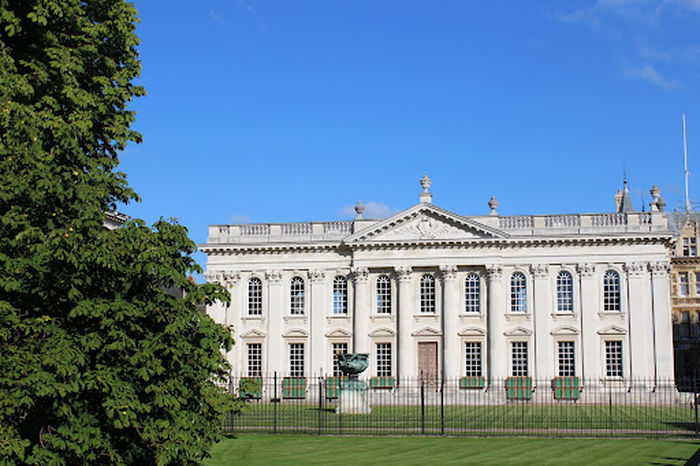Cambridge buildings shortlisted for 2021 RIBA Stirling Prize
Cambridge Central Mosque and Key Worker Housing in Eddington are two of six projects shortlisted for the coveted architecture award

Cambridge Central Mosque and the Key Worker Housing complex in Eddington are two of six buildings that have been shortlisted for the 2021 Stirling Prize, the Royal Institute of British Architects (RIBA) announced on Thursday (16/09).
The RIBA Stirling Prize is the UK’s most prestigious architecture award, presented to the architect of the building that is judged to be “the most significant of the year for the evolution of architecture and the built environment”.
Conceived by Marks Barfield Architects, the firm behind the London Eye ferris wheel, Cambridge Central Mosque opened to the public in April 2019.
Were it to win, the Mosque would be the first religious building to receive the award.
It is Europe’s first eco-mosque, with net zero carbon emissions when in use. Natural lighting and solar energy are used to power the building, while greywater and rainwater are recycled for plumbing and irrigation.
The building is set within an Islamic garden designed by Emma Clark containing an octagonal stone fountain and a chahar-bagh (quadrilateral garden) of crab-apple trees, while its exterior is built in Gault clay bricks typical of Cambridge, patterned with Kufic calligraphy in red brick.
The interior’s defining feature is a timber structure supporting the roof. Pillars reach up to form an octagonal lattice on the ceiling that symbolises the “Breath of the Divine” in Islamic art, at the same time recalling the fan vaulting used in gothic architecture across Cambridge.
In its citation on the shortlist, the Mosque is praised for demonstrating “how architecture can embody religious and cultural philosophy and traditions while utilising sustainable and contemporary materials”.
Designed by the firm Stanton Williams, the Key Worker Housing complex in Eddington was built as part of the University of Cambridge’s North West Cambridge Development scheme.
Fostering “a communal sense within the development” is at the forefront of the design, with interconnecting courtyards reminiscent of a Cambridge college and terraces on the rooftops serving as social spaces.
The architects Stanton Williams have used a sober palette of materials throughout, building the ground floor plinth of the buildings in beige Cambridge brick, with paler bricks and reconstituted stone used on the upper storeys.
The landscaping is also environmentally sustainable, incorporating water recycling and sustainable drainage in its design.
The project’s shortlist citation praises the site as a “delightful example of how a rigorous approach to form, materials and details can create a harmonious environment and make a great place.”
Cambridge buildings have won the Prize twice before: the Sainsbury Laboratory at the Cambridge University Botanic Gardens in 2012, and the Accordia housing development, which is located off Brooklands Avenue, in 2008.
Other past winners include the Everyman Theatre in Liverpool (2014), the Scottish Parliament Building in Edinburgh (2005), and 30 St Mary Axe in London, better known as “the Gherkin” (2004).
The winner of the 2021 RIBA Stirling Prize will be announced on 14 October 2021.
 News / Uni Scout and Guide Club affirms trans inclusion 12 December 2025
News / Uni Scout and Guide Club affirms trans inclusion 12 December 2025 News / Cambridge Vet School gets lifeline year to stay accredited28 November 2025
News / Cambridge Vet School gets lifeline year to stay accredited28 November 2025 Science / Did your ex trip on King’s Parade? The science behind the ‘ick’12 December 2025
Science / Did your ex trip on King’s Parade? The science behind the ‘ick’12 December 2025 News / Cambridge study finds students learn better with notes than AI13 December 2025
News / Cambridge study finds students learn better with notes than AI13 December 2025 News / Pembroke to convert listed office building into accom9 December 2025
News / Pembroke to convert listed office building into accom9 December 2025









